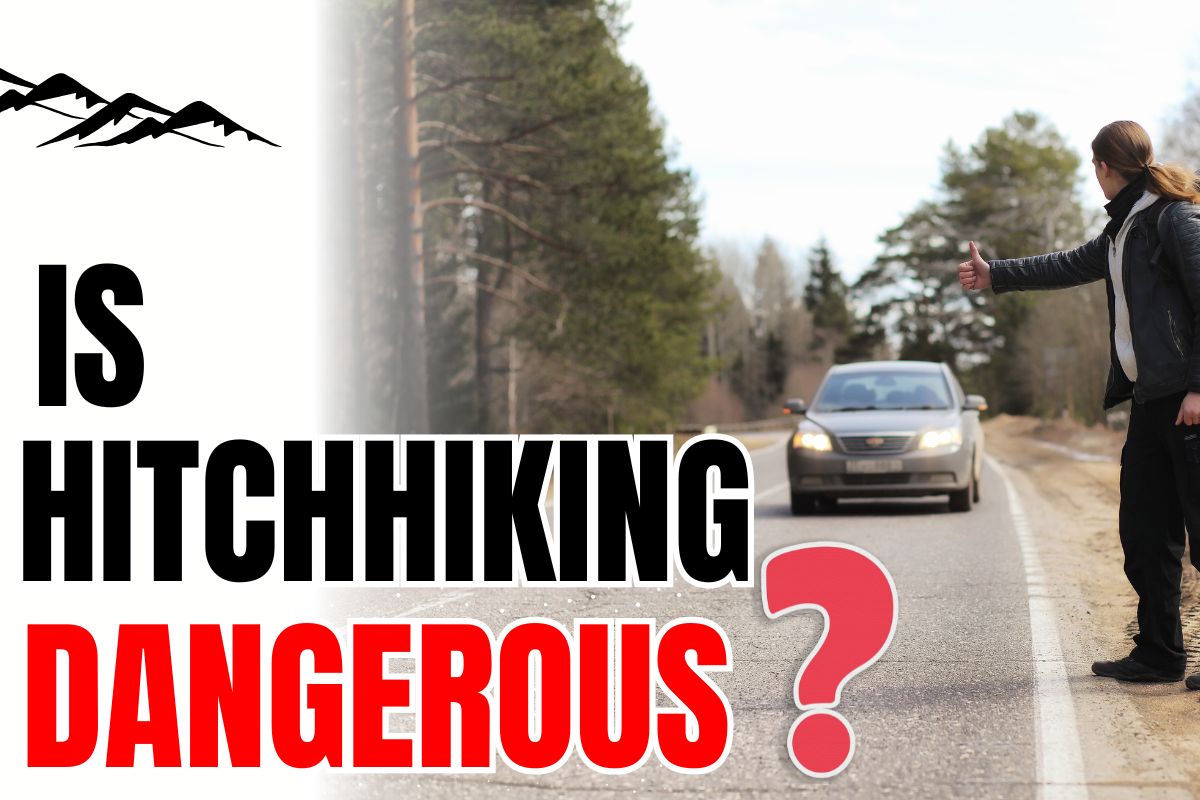Hitchhiking involves a person standing on the roadside and requesting drivers to pick them up. Some view it as a way to travel free of charge. Others believe it’s too risky to make the effort. Over time, various stories (both true and not) have caused people to feel uncertain about the safety of hitchhiking in general.
We take a look here at what hitchhiking actually involves, the risks it involves, and how to be as safe as possible if you decide to hitch a lift.
What Is Hitchhiking?
Hitchhiking means asking a stranger for a ride in their vehicle. You usually stand at a road or petrol station and hold out your thumb or a sign. Some people do it daily. Others try it just once. In some places you can do it legally. In others, you might break the law.
How Common Is It?
Hitchhiking was very popular in the 1960s and 1970s. Since then, fewer people do it. Some folk point to horror movies like Texas Chain Saw Massacre as a reason. Others say it is cheaper to travel, so it still draws interest. But overall numbers have fallen.
Is It Really Dangerous?
There is little solid data showing hitchhiking is dangerous. A 1974 study in California found no more crime against hitchhikers than against other travelers. A German police study also said the real risk is lower than public fear suggests.
That said, some risks exist. Roadside dangers, impolite drivers, and rare violent acts all occur. It is not perfectly safe. But it is not as risky as many people assume when done smartly. Most problems happen when people don’t follow basic safety steps. Staying alert and choosing your ride carefully can make a big difference.
Key Risks
- Road hazards: You might stand too close to traffic. Cars may swerve or drive fast.
- Strange or impaired drivers: Not everyone you meet drives safely.
- Bad weather or darkness: Hitchhiking at night or in rain can get dangerous.
- Being alone with a stranger: This can feel unsafe sometimes.
These dangers exist, but they can be lowered with care.
Smart Safety Tips
- Hitch during daylight and in safe areas. Avoid dark roads.
- Show your sign or thumb from a visible place with space.
- Stay polite but firm. You don’t owe anyone a ride.
- Take your phone, ID, and money and keep them on you.
- Take a photo of the car registration and send it to a friend.
- Travel with a buddy when you can. That’s safer.
- Trust your instincts. If you feel uneasy, say no.
Real Stories from Hitchhikers
A Reddit user who hitchhikes during the day said:
“I don’t hitchhike long ways but i do follow some rules … Hitch hike during the day … stay away from conversation of looking for work.”
Another shared packing ID, phone, and money on their person so they could leave quickly if needed.
These tips match with expert guides from travelers around the world.
Legal Rules Matter
In the USA, hitchhiking is legal, with a few exceptions. But dozens of states, including New York and Pennsylvania, ban it on highways or busy roads.
You can still hitchhike at services or roadside laybys. Just make sure you play by local rules. If you have any doubt about the law in a particular place, check the local transport or police website before you start. Even standing too close to traffic can come with a fine in some places.
Is There a Safer Way?
In some countries, like Germany and Austria, towns have special “hitch benches.” They are safe spots where people wait. Local studies say this reduces risk.
In the US, “slugging” is a similar idea near cities like Washington, DC. Here commuters pick up riders heading the same direction. It is legal, safe, and quite organized.
Should You Hitchhike?
If you do choose to hitchhike, this guide can help keep you safe. It’s not too risky if you plan ahead. But it is not risk-free. Think about your route. Choose a daytime ride. Stick to safe zones. Let someone know where you’ll be. Bring your essentials. You do know you can say no at any time.
Begin with short trips before transitioning to longer ones. It allows you to learn what feels safe and what doesn’t.
For those wanting adventure but not free-form risk, think carpool lanes, riding with travelers, or reliable bus companies. These options still give you variety, but with more control over who you travel with.
Final Thought
Hitchhiking can feel free and spontaneous. It offers a unique way to meet people and save money. But safety matters. The real risks come from where, when, and who you choose to ride with.
Above all, be prepared. Use easy steps: pick daytime rides, send reg plate photos, keep your gear close, and trust your gut. This approach is the best way to stay safe. You might find new stories, experiences, and maybe even friendly company on the road. Above all, make sure you return home safely.
If you’d like info on safe routes, local rules, or stories from experienced hitchhikers, I can help.











